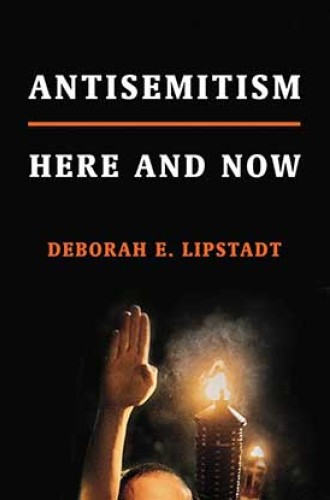The many varieties of anti-Semitism
Deborah Lipstadt shows how anti-Semitic sentiment can spring up where we least expect it.
Just a short drive from the site of the Auschwitz death camps, Polish shopkeepers sell trinkets bearing the image of a money-counting Jew—a stock image that could have come out of the Nazi era. In other parts of Europe, Jews and Jewish institutions have been violently attacked and Jews have taken to covering their heads with baseball caps rather than kippahs to avoid being identified. Meanwhile, in the US, the past 12 months have been the bloodiest ever for Jews: attacks on two synagogues by white nationalists left 12 people dead. According to the FBI, assaults against Jews are the most frequent kind of religion-based hate crime. Anti-Semitism is not only alive and well “here and now,” as Deborah E. Lipstadt puts it, it seems to be on steroids.
Just as alarming and puzzling as the persistence of anti-Semitism is its protean nature. Anti-Semitism surfaces among professors as well as street thugs, in sophisticated ideologies as well as crude stereotypes, and on the political left as well as on the right. It was expressed by the neo-Nazis in Charlottesville in 2017, who chanted “Jews will not replace us,” but also by the organizers of the 2017 Dyke March in Chicago, who prohibited participants from displaying (in rainbow colors) the Star of David because of its association with what organizers deemed a uniquely objectionable country—Israel. Anti-Semitism was featured in a tweet by Democratic representative Ilhan Omar, who echoed anti-Semitic tropes about Jewish avarice when she complained that political support for Israel is “all about the Benjamins” (a reference to $100 bills). It also appeared in a tweet by Donald Trump, who during his presidential campaign adopted an old conspiracy theory about Jews manipulating the global economy and insinuated that Hillary Clinton was the tool of Jewish financiers.
Lipstadt, a professor of Jewish history and Holocaust studies at Emory University, offers an informal field guide to the varieties of contemporary anti-Semitism. The book is organized as a series of exchanges between herself and two fictional correspondents—Abigail, a Jewish college student, and Joe, a non-Jewish faculty colleague—who are alarmed and puzzled by the hostile attitudes toward Jews and Israel that they encounter on campus. The two imagined correspondents never become a forceful presence in the book, so the device is mainly a vehicle for Lipstadt to take up, rather unsystematically, her list of concerns. But the format does give the book an engaging, conversational tone.





